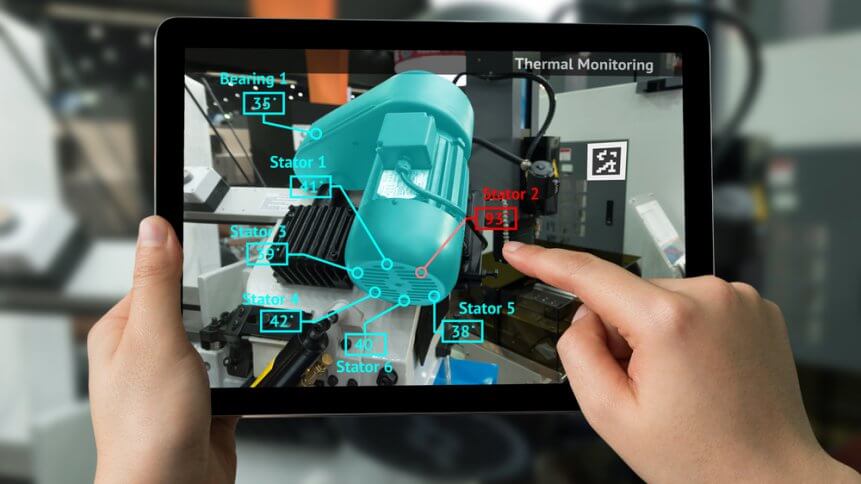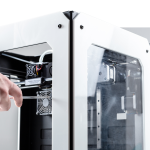How AR could be a boon to B2B sales

The conversation surrounding augmented reality (AR) and immersive technology, more broadly speaking, has slowly shifted through the confines of a consumer gaming technology to a potentially advantageous business tool.
The rationale for this lies at the heart of why immersive technology became appealing in the first place: it engages us and transfers enthusiasm.
In fact, AR has rendered us an unprecedented level of engagement– so it’s no wonder that the technology has steadily enjoyed usage, internally and externally, within B2C and B2B companies.
Specifically, as a sales enablement tool, AR can let consumers ‘experience’ products, within physical environments, to better inform their purchasing decisions.
This year, iVend’s Retail Global Shopping Trends Report revealed that a third of consumers want an AR interface to experience products.
Massive brands such as Home Depot have deployed 3D AR for their iOS app in an effort to render consumers the opportunity to see how faucets or furniture situate in their homes.
If AR has such a great opportunity in consumer sales, can the same case be made for enterprise sales?
Are we ready for AR-driven B2B sales?
The answer is ‘yes’, because quality engagement with prospective customers becomes even more important at the level of complex enterprise sales decision-making.
Successful engagement strategies in B2B sales are best defined by three elements:
# 1 | Multi-sensory engagement
Getting customers involved in learning about, and using, products in a way that is active. Touch, sight, audio and even smell are all important senses to employ when engaging with customers.
# 2 | Intellectual engagement
Sharing relevant and useful information with customers so that they have a meaningful experience learning about and using the company’s products and solutions.
# 3 | Emotional connections
With B2B purchases, research has shown that building an emotional connection is at least as equally important as creating a logical case for people to buy.
Certainly, continuing to develop emotional connections post-purchase leads to loyal customer relationships.
YOU MIGHT LIKE

Is blockchain 3D printing’s guardian angel?
Big potential
The door is wide open for AR, immersive, and 3D interactive solutions to be utilized within the sales process.
With AR, B2B sales teams can superimpose digitally-simulated products in a customer’s business environment. By doing this, the salesperson involves the customer in the sales process and allows them to control their own experience rather than being presented to.
As they engage with the product, they will better remember critical features and benefits, walking away with a concise understanding of the product’s value differentiators– like validating proper fit or optimizing space.
Prospects can also view animations that demonstrate product workflow or processes, to get an understanding of how the product would work in their context.
A wide range of utility
One of the many benefits of AR for sales teams is its versatility in respect to how and where it’s used.
AR is not limited to an ordinary sales meeting; it can be used for trade shows, analyst briefings, product launches, remote sales engagements, and more.
For example, instead of spending an appreciable amount of money to ship an MRI machine to a medical device tradeshow, a company’s sales team can superimpose a simulated model of the product right before a prospect’s eyes at the show.
Not only does it cut down sales and marketing costs, but it also amplifies customer engagement and increases sales productivity and marketing efficiency.
YOU MIGHT LIKE

Will patients trust AI in healthcare?
Whether AR is being deployed in the life science/medical, telecommunications, manufacturing, aerospace, or IT industries, the technology’s utility is practically endless. Creative agencies can use AR to communicate value differentiators for healthcare products. Hypothetically speaking, any commercial plane engine company such as GE could use AR in their sales processes to sell to companies such as Airbus.
As we become more technologically-advanced, companies will start producing increasingly complex product and solution sets whose value propositions will be difficult to illustrate without the aid of 3D product models and immersive technology.
AR – the future
AR has the potential to reduce enterprise sales cycles by up to 50 percent and increase win rates by up to 33 percent. After all, mobile AR & VR is poised to become the primary driver of a potential US$90 billion immersive market by the year 2023.
As AR begins to pick up speed, marketing and sales leaders of B2B brands should heed the vast ROI this technology presents to enterprise sales.
The future of how we sell to businesses lies in how we immerse our prospects through storytelling, and if you’re not onboard, you’ll be left behind.
This article was contributed by Dana Drissel, VP of Marketing at Kaon Interactive.









